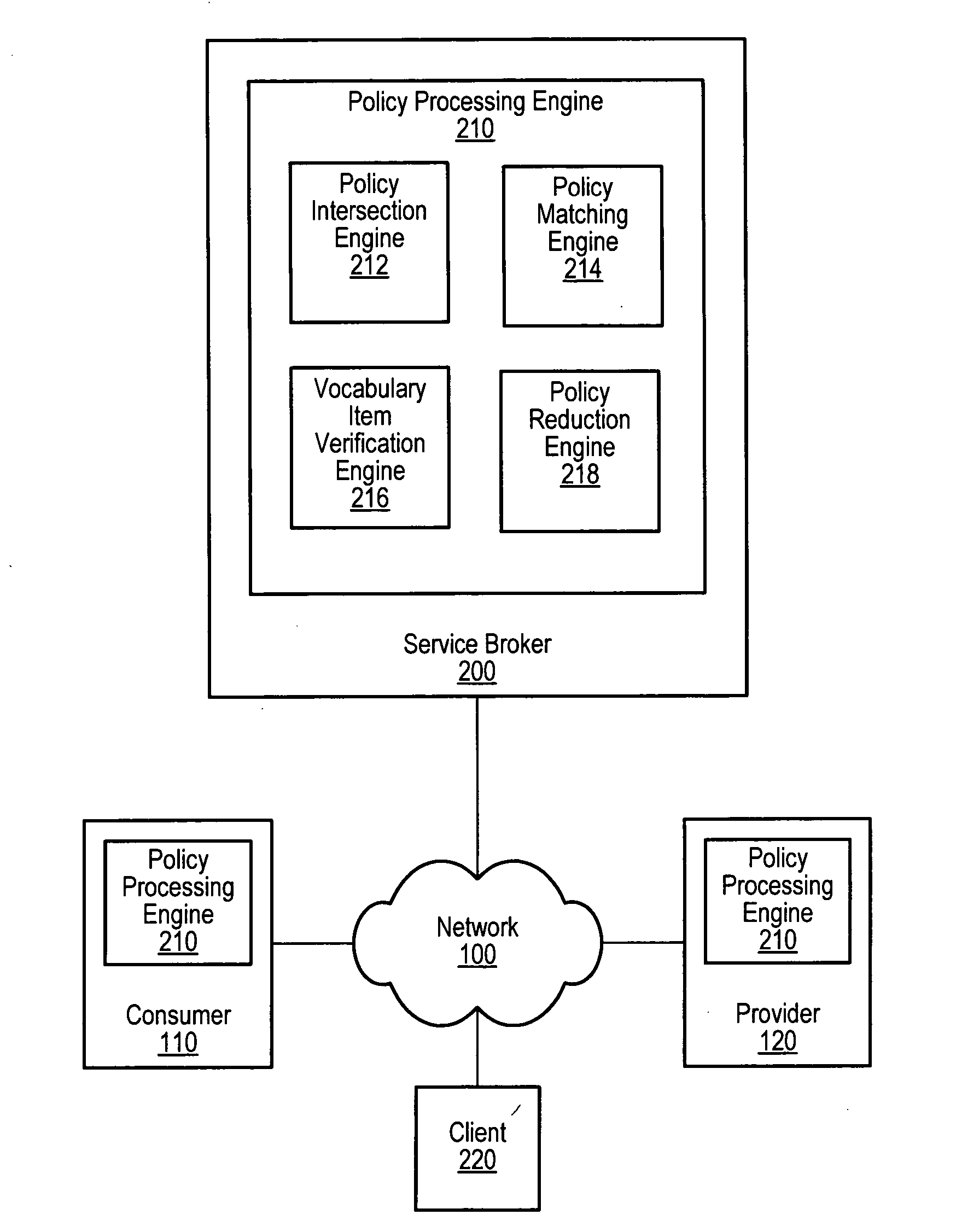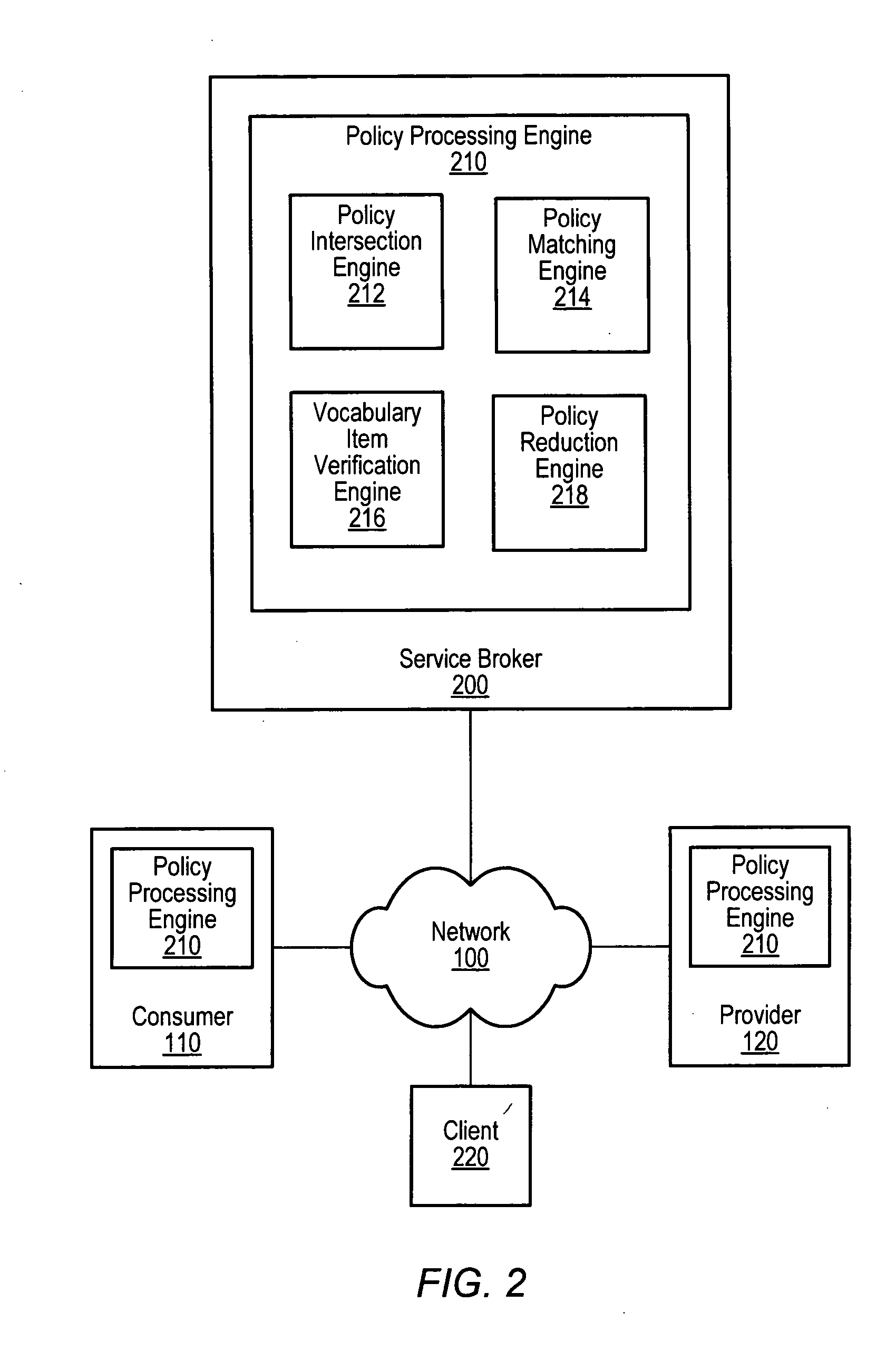Automated policy constraint matching for computing resources
a technology of computing resources and matching algorithms, applied in the field of computer implemented policies, can solve the problems of not being able to automate the linkage of web services, the implementation of web services does not define individual requirements or offerings, and the web services are not normally accessed via object-model-specific protocols
- Summary
- Abstract
- Description
- Claims
- Application Information
AI Technical Summary
Benefits of technology
Problems solved by technology
Method used
Image
Examples
Embodiment Construction
[0039] Policy constraints may specify requirements and / or offerings for computer and / or software related policies, such as for web services interfaces, in a language that supports collections, hierarchies, and / or preference indications of such requirements and / or offerings. Additionally, automated matching of policy constraints against provider offerings may allow a policy-processing engine to deal with specifications of requirements or offerings from any domain-specific schema without having to know the domain-specific semantics of specific requirements or offerings.
[0040] For example, as illustrated in FIG. 2, a web services consumer 110 may desire to access a service provided by web services provider 120 over network 100. In order to discover web service provider 120, consumer 110 may access service broker 200, according to one embodiment. For instance, provider 120 may register a service description, such as may be defined using WSDL, with service broker 200. Consumer 110 may a...
PUM
 Login to View More
Login to View More Abstract
Description
Claims
Application Information
 Login to View More
Login to View More - R&D
- Intellectual Property
- Life Sciences
- Materials
- Tech Scout
- Unparalleled Data Quality
- Higher Quality Content
- 60% Fewer Hallucinations
Browse by: Latest US Patents, China's latest patents, Technical Efficacy Thesaurus, Application Domain, Technology Topic, Popular Technical Reports.
© 2025 PatSnap. All rights reserved.Legal|Privacy policy|Modern Slavery Act Transparency Statement|Sitemap|About US| Contact US: help@patsnap.com



